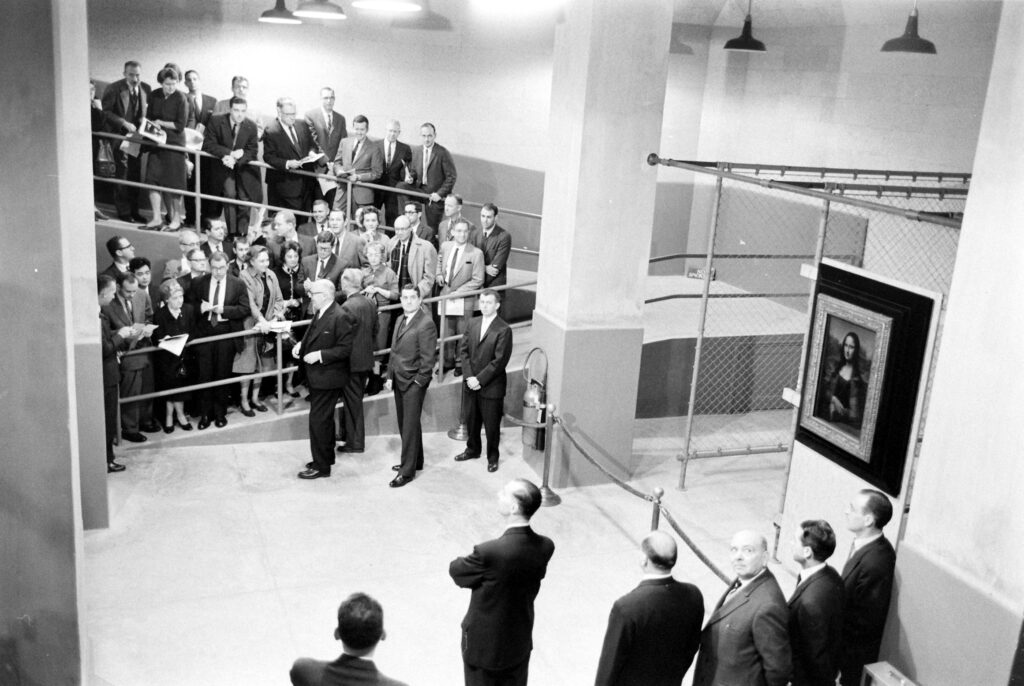Bangkok is the largest city in Thailand and one of the most popular tourist destinations in Asia, attracting more than 22 million visitors a year. Among those who were drawn to the Thai capital over the years, on multiple occasions, were the photographers of LIFE magazine.
LIFE’s biggest Bangkok photo shoot, and the one which supplied most of the images in this story, was done by Dmitri Kessel in 1950, for a story that ran in a 1951 issue of the magazine devoted entirely to the wonders of Asia.
In that issue LIFE declared Bangkok “the most impressive Buddhist city in all the world.” Here’s that declaration in its fuller context, as part of a larger ode of praise:
The city is laced by placid canals on which housewives ride in sampans to market, scented in perfume, which the Siamese love, and lulled by the endless soft tinkling of tiny silver bells that swing from the ornate eaves of the temples. The streets swarm with yellow-robed priests.
All things in Bangkok—the temples, bells, priests and people—combine in honoring the Lord Buddha, and they make Bangkok the most impressive Buddhist city in all the world. Its serenity, almost unique in Asia’s cities now, is rooted in that religion, and because of it, Bangkok is the one city that still fulfills the most romantic fairytale dreams of the Orient. It is Buddhism’s remarkable monuments that seem to lift Bangkok up from its plain into a never-never-sky that even the most unimpressionable Westerner might think was heaven’s own curtain.
Kessel’s photographs do show Buddhist shrines, and that is what the magazine emphasized in its coverage, but he also captured everyday street scenes as his eye wandered. One of the most striking images was taken on the rural outskirts of the city, and shows local farm girls gathered underneath a billboard for Coca-Cola.
LIFE’s other ventures to Bangkok include a shoot by Howard Sochurek for a 1955 story headlined “The Path of Buddhism.”
And in 1948 Jack Birns went to Bangkok to document the combat sport known as Muay Thai. Birns’ photos did have a Buddhist element, as he captured fighters praying in the ring before going at each other. Today the sport is more familiar to Westerners, owing to the popularity of mixed martial arts and also the use of Muay Thai training in workout routines. But back in 1948 LIFE presented the sport as an exotic oddity. The magazine’s story concluded “If at the end of three five-minute rounds both principals have managed to avoid hospitalization they often embrace, possibly because they are relieved that the ordeal is over.”

A billboard on the outskirts of Bangkok, 1950.
Dmitri Kessel/Life Picture Collection/Shutterstock

The Temple of Emerald Buddha in the center of Bangkok, 1950.
Dmitri Kessel/Life Picture Collection/Shutterstock

The inner courtyard near Buddhitst shrine in Bangkok, 1950.
Dmitri Kessel/Life Picture Collection/Shutterstock

The Buddha in the caves of Phetchaburi, south of Bangkok, was the destination of many pilgrimages, 1950.
Dmitri Kessel/Life Picture Collection/Shutterstock

Ruins of the 37-foot Buddha in Bangkok, 1950.
Dmirtri Kessel/Life Picture Collection/Shutterstock

In Bangkok a man sold melons in a floating market, 1950.
Dmitri Kessel/Life Picture Collection/Shutterstock

Fishing in canal near Don Mueang airport, which serves Bangkok, 1950.
Dmitri Kessel/Life Picture Collection/Shutterstock

Farm girls going fishing in a canal near Bangkok, 1950.
Dmitri Kessel/Life Picture Collection/Shutterstock

Chinese dyers with their cotton material hanging in the yards, Bangkok, 1950.
Dmitri Kessel/Life Picture Collection/Shutterstock

A mother gave her baby a bath in Bangkok, 1950.
Dmitri Kessel/Life Picture Collection/Shutterstock

Chinese graveyard in center of Bangkok, 1950.
Dmitri Kessel/Life Picture Collection/Shutterstock

Bangkok, 1950.
Dmitri Kessel/Life Picture Collection/Shutterstock

Bangkok, 1950.
Dmitri Kessel/Life Picture Collection/Shutterstock

Arann Reongchai (left) and Prasong Chaimeeboon during a Muay Thai boxing match, 1948.
Jack Birns/Life Picture Collection/Shutterstock

The ref counts out a competitor in a Muay Thai match, Bangkok, 1948.
Jack Birns/Life Picture Collection/Shutterstock

Monks begging for food at dawn on main thoroughfare of Bangkok, 1954.
Howard Sochurek/Life Picture Collection/Shutterstock

Monks walking outside a Buddhist temple in Bangkok, 1954.
Howard Sochurek/Life Picture Collection/Shutterstock

A billboard in Bangkok, 1950.
Dmitri Kessel/Life Picture Collection/Shutterstock

Billboard advertising in Bangkok, 1950.
Dmitri Kessel/Life Picture Collection/Shutterstock

Cockfighting in Bangkok, 1950.
Dmitri Kessel/Life Picture Collection/Shutterstock

A canal vendor sold bean sprouts in Bangkok, 1950.
Dmitri Kessel/Life Picture Collection/Shutterstock

A water buffalo, Bangkok, 1950.
Dmitri Kessel/Life Picture Collection/Shutterstock























































































































